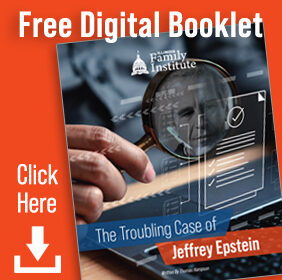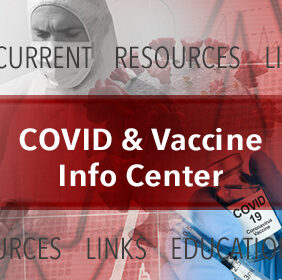
This interview was originally published on the NationalReview.com blog.
In one of the under-reported news stories of late 2013, a “meta-analysis of the association between induced abortion and breast cancer risk among Chinese females” was published in the journal Cancer Causes Control. Joel Brind, a professor of biochemistry, physiology, and immunology at Baruch College at the City University of New York, and president of the Breast Cancer Prevention Institute, has done extensive research studying the connection between abortion and breast cancer, a connection we should all — particularly groups wearing pink ribbons — want to know the truth about. Brind talks to National Review Online’s Kathryn Jean Lopez about what we know and what we should be asking.
KATHRYN JEAN LOPEZ: What’s new about the Chinese study?
JOEL BRIND: There are several things that are new about this study:
First of all, it is the first meta-analysis of just the Chinese data, and it summarizes the data of a hefty number of studies (36 in all). Many of them were published in Chinese, so a number of new studies’ worth of data have now been made available to us.
Second, the article includes a number of studies whose data did not distinguish between induced and spontaneous abortion, the latter well established as not increasing breast-cancer risk. Typically, I and others exclude such studies from our studies on induced abortion and breast-cancer risk. However, the Chinese study (Huang et al.) justified their inclusion by also including data on the rate of spontaneous abortion in China, i.e., as being only about 10 percent of total abortions, owing to the extremely high induced-abortion rate. Then, they tallied the data separately for the two types of studies, and found that the studies restricted to induced abortion averaged a 49 percent increase in risk, compared to a 41 percent average increase in risk for the studies that had combined induced and spontaneous. As expected, therefore, the latter number is slightly but not significantly lower than the “pure” induced-abortion number. They thus reported the combined figure as a 44 percent risk increase, and this is therefore a slight underestimate. This Chinese study confirms — specifically — the results I obtained in my 1996 meta-analysis I did in collaboration with colleagues at the Penn State Medical College. In fact, they report a slightly stronger link, i.e., a 44 percent overall risk increase for one or more abortions, compared with the 30 percent we reported.
It also confirms the theorem we (Vern Chinchilli of Penn State and I) articulated in a 2004 letter in The British Journal of Cancer. Not only is our letter cited and approving attribution given to our argument, but Huang et al. also performed a “meta-regression” analysis of all the Chinese studies which confirmed the theorem.
Huang et al. describe the theorem thus in their discussion: “As argued by Brind and Chinchilli [citing Brind and Chinchilli 2004], once the prevalence of a given exposure rises to a level of predominance in the control group, statistical adjustment cannot remove all the confounding caused by the adjustment terms. This was well exemplified by the meta-regression analysis in our study.” In layman’s terms, the value of epidemiology is to identify an exposure factor (in the present case, induced abortion) which may increase or decrease the risk of a given disease (in the present case, breast cancer), by comparing the relative minority of exposed individuals to the typical healthy person in the general population. But if the exposure is so prevalent as to become the rule rather than the exception, the unexposed population is no longer typical, but may represent a subgroup that is at elevated risk for other reasons. In the present case, the unexposed women in China are likely to be those women who did not get pregnant and have children or did not have children at as young an age as the exposed (post-abortive) women. Since nulliparity and late age at first childbirth are strong risk factors for breast cancer, the post-abortive are thus being compared to women at elevated risk, so the risk increase due to abortion tends to disappear, in direct proportion to the prevalence of abortion in the population. This is precisely what the Huang et al. meta-regression analysis shows.
LOPEZ: What’s familiar about the Chinese study?
BRIND: If one looks at the so-called “Forest plots” — standard graphical representations of the component studies of a meta-analysis, they look oh-so familiar to me, in that the overall, significant elevation in risk across the multiple studies is obvious at a glance. What is — sad to say — unfamiliar is the fact that it is a very straightforward study with no statistical manipulations or verbal contortions to “fudge” or hide the risk increase.
LOPEZ: What about this study was unique to China?
BRIND: Here again, Huang et al. restate what we had argued in our earlier publications: “First, different from the USA where abortion is used predominantly to postpone first childbirth, almost all induced abortions in China were performed to limit family size after the first child. Therefore, more induced abortions may imply an early age of childbirth. The protective effects of early childbirth will probably dilute the harmful effect of more induced abortions.”
In lay terms: Even though they observed a dose effect (i.e., more abortions mean greater risk of breast cancer than one abortion), the effect of abortion is likely underestimated because the post-abortive women also experience the protective effects of having earlier first childbirths. This is really the flip side of the problem I’ve mentioned regarding the high prevalence of abortion. In short, what’s unique to China — the one-child policy — tends to lower the observed association between induced abortion and breast cancer.
LOPEZ: What does this mean for China’s one-child policy?
BRIND: It’s pretty clear what it means: Over 8 million abortions every year means a robust breast-cancer epidemic. A prestigious mainstream U.S. researcher published a study in The Journal of the National Cancer Institute in 2008 that concluded: “China is on the cusp of a breast cancer epidemic.” That study, curiously (but not surprisingly) did not mention the word “abortion” and attributed the emerging epidemic to (among other things) “shifting reproductive trends” and “lifestyle changes that are associated with economic development.” In contrast, it was refreshing that the bottom line of the Huang review was straightforward: “High rates of induced abortion in China may contribute to increasing breast cancer rates.” I would only add, “Ya think?”
LOPEZ: Yet another study on breast cancer and abortion just came out from India. Is that significant, also?
BRIND: Yes, and it also shows a very strong link. However, it does not distinguish between induced and spontaneous abortions. These days, though, the overwhelming majority (90 percent in China, according to Huang’s study) are induced. Moreover, since it is established that spontaneous abortions do not add risk, any combined estimate is likely a slight underestimation.
LOPEZ: What questions should the West be asking about abortion and breast cancer?
BRIND: Seriously, were abortion not a politically protected procedure, the acknowledgement of its being one of the causes of breast cancer would long ago have been acknowledged. But this would have been devastating to the proponents of abortion. Even when abortion is legal, women would tend to avoid it if they knew it could cause breast cancer. But it is also important to remember that abortion’s legal status is largely dependent on its purported safety to women, something which is an explicit premise in Roe v. Wade. Scientifically, the questions have been asked and answered, and it’s high time women were allowed to know those answers.
LOPEZ: You’ve been characterized as a bit of a crusader on this issue. You’re opposed to abortion. Does that create a credibility question? Would it be better if, say, Komen were leading this research?
BRIND: An interesting question, and here’s a second, which really answers the first: Name one example over all the years of the public debate over cigarette smoking and lung cancer where researchers who claimed the existence of a link were dismissed for being “anti-smoking?” When it comes to any sort of scientific research, every researcher has biases. In fact, it is generally the bias that motivates the research; that is to say, one is motivated to test a hypothesis because one believes that it is likely true or that it is not. But a good scientist — like a good journalist — is expected to be able to put biases aside and conduct objective research.
That being said, it should be noted that many of the researchers (even among my own co-authors) who have documented the abortion-breast-cancer link have considered themselves to be “pro-choice.” So the credibility question is a distraction from a real examination of the scientific merit of the studies. Any objective view of the evidence by a competent scientist would have concluded that the evidence is overwhelming — long before the Chinese meta-analysis.
Now since you mention Komen, it is interesting that in the face of such overwhelming evidence, Komen toes the party line that there is no link. I would think that raises a credibility question for them as to whether they actually give a hoot about protecting women from breast cancer. Even if the evidence were equivocal, the precautionary principle would certainly dictate that they not sweep it under the rug.
LOPEZ: When did you first start looking into the link and why? What have you learned?
BRIND: I came across the link in 1992, when the Halloween-themed cover of the October 31 issue of Science News featured a story about pregnancy and cancer. The article interested me because breast cancer (and more specifically the role of endogenous-sex-steroid hormones and their precursors) had been a specific research interest of mine since 1982. But I was puzzled that the article never mentioned the word “term” in talking about the protective effects of pregnancy, as I seemed to remember having read — in a high-profile, international multi-center study published by the World Health Organization in 1970 — that only a full-term pregnancy was protective. In fact, the study suggested that abortion went the other way and increased the risk. So I went back to the library and confirmed what I had remembered.
Moreover, it seemed that in the decade since I had first read up on breast-cancer epidemiology, enough studies had emerged to suggest to me that the link between abortion and breast cancer was likely real but was also being swept under the rug. Hence I decided to make investigating this issue my main research endeavor, as it was an important preventable factor (isn’t that what “choice” means?) that was not about to be become common knowledge without the efforts of someone like me to make it so.
So that’s what got me started on this road. Since then, I learned that there was even a great deal more resistance to the idea of the link than I had imagined. For example, a group at Oxford University has been consistently publishing study after study since 1982 to disparage the link by claiming “reassuring” evidence to the contrary. I also learned that the most powerful voice in covering up the link is that of the U.S. National Cancer Institute, renowned throughout the world as the authority about what causes cancer and what does not. In reality, the NCI is a federal bureaucracy — part of HHS, the federal agency which brings you Obamacare. Far from being some idealistic organization of do-gooders, the NCI boils down to a small group of federal bureaucrats who decide who gets cancer-research money and who does not. No doubt much of the funded research is good, but when it comes to anything politically loaded, like abortion, all bets are off.
Even liberal Supreme Court justice Stephen Breyer has, in his earlier writings, noted that the NCI is a political agency and subject to political pressure. It remains to be seen just how long they can keep the lid on the abortion-breast-cancer link. I just wish that interval was not measured in millions — perhaps tens of millions — of women needlessly suffering breast cancer. And this is not hyperbole. Just think: There are over a billion women in India and China alone. If half of them have an abortion and the lifetime risk of breast cancer goes up a modest 2 percent, that comes out to 10 million women.
As to the science, we have all learned — especially over the last ten years — so much more about how the breasts develop normally — and abnormally. Consequently the biological basis — which must be established before any epidemiological connection is proved to be a causal link — is also now very well established. This subject is covered well (as is the epidemiological story) on our Breast Cancer Prevention Institute website.
Finally — to end on an optimistic note — I believe that my more recent research, into nutritional biochemistry, has unearthed the fundamental cause of the chronic inflammation that underlies the development of almost all cancers, not to mention heart disease, arthritis, Alzheimer’s disease, etc. And that is an almost universal deficiency of the amino acid glycine due to the peculiarity of the typical modern high-protein diet. We eat lots of meat, fish, and poultry, which is rich in the essential amino acid methionine. Though methionine is essential, we usually eat way more than we need, so the excess is toxic and our liver needs to dump it. However, the only pathway the liver has to get rid of excess methionine uses up another amino acid, the non-essential amino acid glycine. Glycine is the most abundant amino acid in the body, residing mostly in the bones and connective tissues — the parts of the flesh we eat that we usually throw away. So even though glycine is non-essential, our bodies cannot keep up with the increased need for it because of all the excess methionine we eat, and we throw away most of the glycine in the foods we eat at the same time. But the reason this is critical is that glycine just happens to be the most important endogenous regulator of inflammation.
Now, of course, it will likely take decades to prove the glycine story, but since it’s just food, it can be harmlessly eaten as a supplement. It is my hypothesis that such glycine supplementation will protect women from breast cancer regardless of their reproductive history, so that may be my most enduring contribution to women’s health.



















